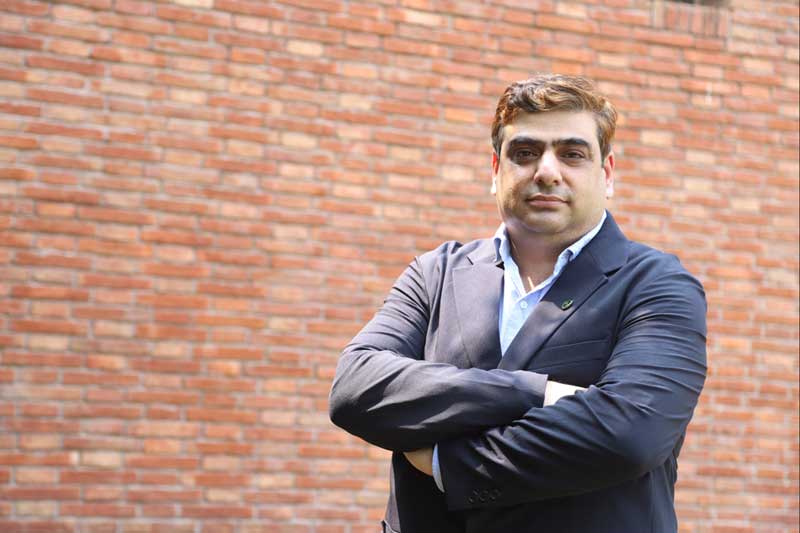
Ever since humankind learned to tame fire, light has played an active part in the human enterprise. From the continuously burning bonfires of prehistoric tribes to handheld torches of ancient peoples, wax candles, incandescent bulbs, and finally light-emitting diodes (LEDs), humans have changed light over the millennia as per their needs. LEDs are lights’ most recent and evolved incarnation.
LEDs are semiconductor devices that emit light when electric current flows through them. The first LED to emit visible light was invented in the early 1960s. This first LED could only emit red light. After years of experimentation and development, LEDs that could produce other colors were developed. As LEDs grew in sophistication, the US Government encouraged businesses to replace their incandescent bulbs with LEDs because they consume 80% less energy and last 25 times as long as the incandescent bulbs.
Today, LEDs are commonplace across the world. They produce better light than ordinary light sources and help households and businesses save on energy bills. While conventional LEDs are certainly a big step forward, they have much room for improvement. Conventional LEDs – despite having significant advantages over incandescent bulbs – are used just like traditional bulbs are. People turn these bulbs on and off by walking up to a panel and flicking a switch. LEDs are digital lights in a digital era. Still, most households continue using them just like they used ordinary bulbs!
To get the most out of LEDs -including energy savings – households and businesses need to make a shift in their decades-long relationship with indoor lighting. They can make this shift by adopting smart lighting solutions. Such lighting solutions – integrated around LEDs – can improve users relationship with light and enhance their overall experience and at the same time lead to even more energy savings than using unconnected LEDs do.
With lighting getting Digital it has become possible to embed smart features within them and making them much more useful for variety of applications across home, commercial and Industries spaces. Some may look identical to conventional LED bulbs but a whole lot of other luminaires like stripes, panels, downlights, streetlights can be enabled with smart features. superior. These LEDs are much more technologically advanced when compared to traditional LEDs
They can be operated from a mobile or desktop application. Households that install them can turn their lights on or off without getting up from the couch or bed and, even when they’re miles from home. What’s more, these LED lights can be dimmed, illuminated, or changed to a different colour as required.
Those who live in a home with such LED technology enjoy a more harmonious relationship with lighting and their homes’ indoor and outdoor spaces. Thanks to such LEDs, spaces can be instantly transformed to suit the preferences of occupants.
Also, these lights can be automated to turn on or off at a specific time or date. Furthermore, with sensors, such lights can sense when someone enters or leaves a room and turn on and off accordingly.
These LEDs can become part of an entire home’s intelligent ecosystem. Such connectivity means that LEDs – and every other smart device in a home – can be operated from a single smartphone or desktop application. Such connectivity gives unprecedented control over a home to a household and user / facility management in a commercial set up.
Besides Control and Integration, Smart LED lighting allows two-way communication between devices, so that a device can report a failure, or answer a query about its status or other information. These features can help in better management of large Installations in large commercial spaces like Office buildings, Malls, Airports, Stadium, Large monuments, Iconic structures, and Outdoor lighting.
Greater convenience isn’t the only reason to install intelligent LEDs.
LEDs are very energy efficient; however, intelligent and connected LEDs are even more so. They can be programmed to adapt to the habits of households, which means they’d seldom be left on for no reason and would not illuminate a space more than required. For households, having such adaptable devices leads to significant energy savings. Furthermore, since intelligent LEDs consume less energy, they’re also better for the environment. They’re already playing a part in helping meet sustainable development goals.
For Commercial spaces, the smart sensors embedded in the Smart LED Lighting capture the usage pattern which can be used as input to the scheduling plan for future thus helping to lighting system to adopt to the usage of Spaces and making sure optimization of the resources.
There has been significant innovation concerning LEDs; however, the best still lies ahead.
Technologies like AI and IoT are enhancing the capabilities of LEDs. With AI embedded in such LEDs, these light-emitting devices can adapt to household habits without being programmed. The adaptability of AI means that these LEDs often surprise households with their ability to understand and anticipate occupants’ needs.
When intelligent LEDs are used along with IoT devices, the results are surprising.
IoT devices inside homes & offices collect data about what’s happening inside, including the habits and preferences of occupants. The data collected is then analyzed to arrive at actionable insights that make life easier for those living in a home. Such data makes LED usage even more efficient and adaptable. Expect greater integration of AI and IoT devices into LEDs in the upcoming years and beyond. Also, expect LEDs to become even more sustainable and eco-friendly.
The best way to predict the future is by extrapolating from the past and observing current trends. Today, the past points to a future in which intelligent lighting solutions are commonplace. In a few decades, standalone LED solutions may seem as quaint as some centuries-old lighting solutions humans used during their millennia-long lighting enterprise.